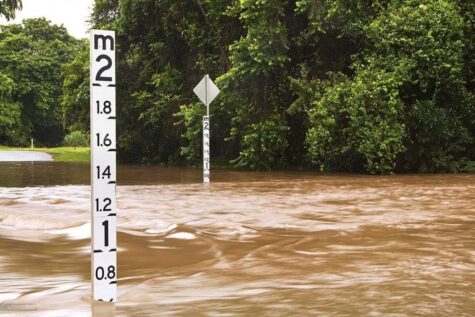Know the common challenges of managing government projects to overcome them
Consistent reporting and stakeholder engagement can form a challenge and play a role in government projects achieving their stated goals. To achieve the outcomes that their constituents rely on, it’s of importance that departments are taking a rigorous approach to government project management. By adopting proven tools and techniques, the public sector can use data to drive outcomes that scale with each new project.
Without a doubt, the most cost effective and evidence-based solution to overcoming these challenges is the adoption of a purpose-built government project management software system. The first step in overcoming these challenges is identifying a software solution that maps to the unique requirements of project lifecycle management.
Understand the lifecycle of your project
The government project lifecycle is a high-level overview of the stages involved in moving a project from proposal to acquittal, or closure.
Using a lifecycle approach provides a systematic framework to project-based work and allows you to better structure timelines and reporting processes.
While there are a range of lifecycle frameworks, a common approach will involve a series of linear steps such as:
- Initiation – Determining project scope, business case, deliverables, milestones and timelines, objectives, budgets, and risks.
- Planning – Developing more detailed documentation around the project scope, determining performance indicators and the structure of the project. Additionally, it should include a resource plan and detailed budget estimations.
- Execution – Budget is allocated, team members and other project stakeholders are continuously briefed and managed through task and workflow management.
- Monitoring, Controlling and Closing – These final steps all revolve around tracking spending, timelines, and goals to ensure they are aligned with your project plans. It is also a time for reflection, by reporting on outcomes and determining future plans.
Purpose-built government project management software is often mapped to these lifecycle stages. Its features streamline core business processes. As such, a digitised project management platform contains key features such as:
- document management
- fund management
- project scheduling and milestone tracking
- workflows and automations
- notifications, emails, alerts, and reminders
- roles-based permissions and secure controls
Let’s explore how document management simplifies the initiation phase through a more collaborative approach to scope management.

Digitise your documentation and make scope management a priority
Effectively managing the scope of a project is essential to limiting uncertainty later on in the project lifecycle. This can include the breadth of outputs, outcomes and the timelines required to achieve them.
Given the range of stakeholders involved in any given project, different interests and expectations will inevitably emerge as projects progress. This ‘scope creep’ can impact performance as questions and competing ideas arise around costs, timelines, and goals. Scope creep often compounds over time. Therefore, it’s essential that government project managers can iron out the details early in the planning phase. Ideally, they also check in with stakeholders throughout the project delivery.
To ensure consistency in expectations and a clear project scope, it’s best to get everyone on the same page early. Documents such as a clear scope of work and a detailed business case help create an alignment between your project, your organisation’s strategic programs and its stakeholders.


Government project management systems such as Enquire provide cloud-based contract management, aligned to projects which are in turn aligned to larger programs. This provides project managers and their colleagues with access to these documents at any time. Additionally, all information in one central location. Such a relational database of documentation enables the development of a clear strategic vision.
While scope management is essential, it’s critical to remember that projects that are overly rigid also run the risk of failing. That’s why Enquire streamlines scope variation management for government projects. It provides project managers with flexibility over timelines, costs and goals. With timelines in mind, let’s turn our attention to the role scheduling plays in project outcomes.
Utilise modern scheduling tools for government project management
Once a project manager has a clearly defined scope of work and timeline estimates for its associated activities, it’s time for the next step. It’s necessary to develop a timeline to forecast where costs and contractual obligations fall throughout the project.
In Enquire this process is handled in the scheduling tab of a project record. This is where incoming and outgoing payments, as well as contract milestones are recorded, actioned, and managed. It allows the team to review contracted and paid amounts at glance, as well as the dates projects are due and ultimately completed.

With a searchable schedule with sort and filter capabilities it is easy for a project manager to assess the outputs of an individual supplier or assignee in a few clicks. Having this information on hand is essential. The public sector grapples with increasing demands to do more with less and identify high performing resources.
Financial integrations make executing payments from within the system simple and efficient. Therefore, teams can quickly transition from the planning phase of the lifecycle to actual budget allocation. Better still, the project costs tab can be used to link project costs to payment milestones. This becomes essential as projects move into the monitoring, controlling, and closing phases of the project lifecycle.
Transparent risk and stakeholder management
As outputs begin to materialise, it is important that they undergo quality assurance checks to ensure they deliver against the stated project outcomes. In smaller projects, these may be informal processes. In larger initiatives this may require dedicated assessment workflows to manage and review their outputs.
Likewise, depending on the length of your project your reliance on status reports will vary. Enquire digitises the project status and client reporting processes, with configurable forms, comments, attachments, and a host of other features. These allow your team to better understand how progress is being made against milestones, budgets and any identified issues or risks.
The richness of this data capture makes identifying and responding to risks and issues a proactive process. So does its integrated inclusion throughout the project management system. Contrast this to the use of conditional formatting in an Excel spreadsheet, where by the time you’re seeing red cells you can already expect delays, increased costs and stakeholder blowback.
Risk management is more than a series of checkboxes. It is an active component of every project lifecycle and should be reflected as such in your software solutions. When you consider risk management in this light, it becomes easier to identify not only risks but opportunities. For example areas to reduce costs, enhance efficiencies and deliver greater outputs for all stakeholders. Enquire gives project managers the oversight required to not only identify these opportunities, but to action them.
If we take a step back and explore how this data is captured in the first place, we realise another key requirement in any government project management software. Namely, that configurability, of both processes and data points, is what gives government programs the ability to manage efficiently. Additionally, it contributes to remaining flexible to project demands.
Use configurable reporting indicators to streamline project governance
Setting defined goals and strategic alignment between projects and programs are important for good project governance. And this is made much easier by adopting more configurable management systems.
At no stage in the project lifecycle is this clearer than in outcome reporting. By measuring and reporting outputs against projects, it becomes easy for managers to communicate their impact, compare their performance, and make better decisions at the program level. Establishing these indicators should occur early so that they can be reviewed and reported on throughout the project.
In Enquire indicators are integrated into your progress reporting, ensuring your external project partners report against your stated goals. The system’s interface provides clear indications of when and where reporting data was sourced, as well as how these numbers relate to program objectives. The easy-to-read interface provides an indication of the percentage completion of a particular target, making it simple for project managers to provide their stakeholders with precise project performance metrics.

This one feature tackles two of the biggest challenges in modern project rollouts, while also providing additional benefits to the transparency and governance of government projects. Such systems help keep the public sector accountable, improving the trust of constituents and their confidence in government services.
Why you need dedicated government project management software
Enquire was purpose built to deliver enhanced oversight for government projects and grant programs. Its subsequent development has been informed by the feedback of local, state, and federal government clients and their constituents, who frequently report on the ease of use and sector-specific benefits of the system. These six consideration are a reflection of these reports and Enquire has built in tools to manage these accordingly.
Want to learn more about it Enquire? Discover it here. Alternatively, read more about project portfolio management here.


